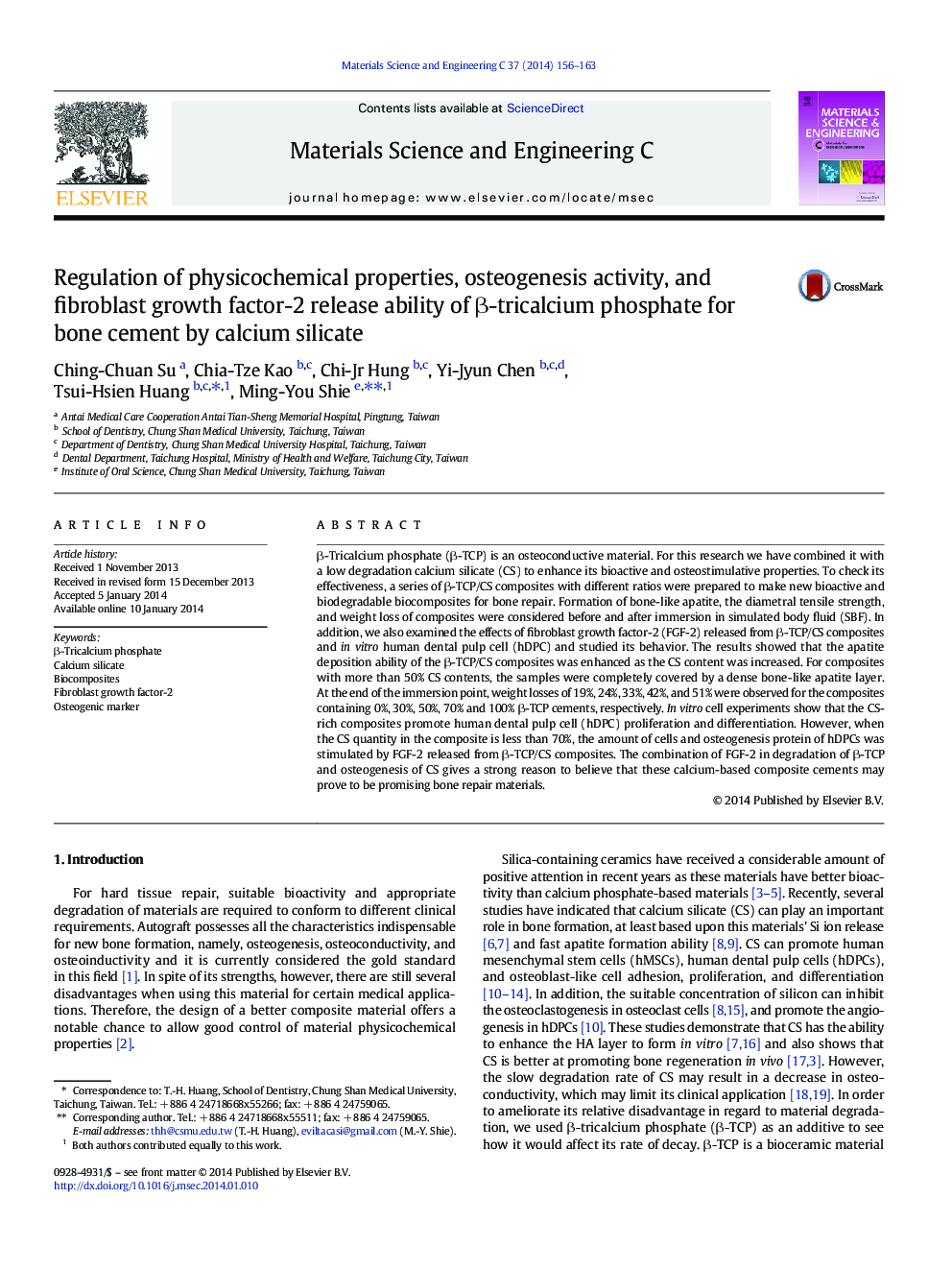| کد مقاله | کد نشریه | سال انتشار | مقاله انگلیسی | نسخه تمام متن |
|---|---|---|---|---|
| 1428995 | 1509184 | 2014 | 8 صفحه PDF | دانلود رایگان |

• CS improved physicochemical properties and osteogenic activity of β-TCP.
• The higher the CS in the cement, the shorter the setting time and the higher the DTS.
• The cell behavior was stimulated by FGF-2 released from composite containing 50% CS.
• β-TCP/CS composite with FGF-2 has optimal properties for hard tissue defect repair.
β-Tricalcium phosphate (β-TCP) is an osteoconductive material. For this research we have combined it with a low degradation calcium silicate (CS) to enhance its bioactive and osteostimulative properties. To check its effectiveness, a series of β-TCP/CS composites with different ratios were prepared to make new bioactive and biodegradable biocomposites for bone repair. Formation of bone-like apatite, the diametral tensile strength, and weight loss of composites were considered before and after immersion in simulated body fluid (SBF). In addition, we also examined the effects of fibroblast growth factor-2 (FGF-2) released from β-TCP/CS composites and in vitro human dental pulp cell (hDPC) and studied its behavior. The results showed that the apatite deposition ability of the β-TCP/CS composites was enhanced as the CS content was increased. For composites with more than 50% CS contents, the samples were completely covered by a dense bone-like apatite layer. At the end of the immersion point, weight losses of 19%, 24%, 33%, 42%, and 51% were observed for the composites containing 0%, 30%, 50%, 70% and 100% β-TCP cements, respectively. In vitro cell experiments show that the CS-rich composites promote human dental pulp cell (hDPC) proliferation and differentiation. However, when the CS quantity in the composite is less than 70%, the amount of cells and osteogenesis protein of hDPCs was stimulated by FGF-2 released from β-TCP/CS composites. The combination of FGF-2 in degradation of β-TCP and osteogenesis of CS gives a strong reason to believe that these calcium-based composite cements may prove to be promising bone repair materials.
Figure optionsDownload as PowerPoint slide
Journal: Materials Science and Engineering: C - Volume 37, 1 April 2014, Pages 156–163